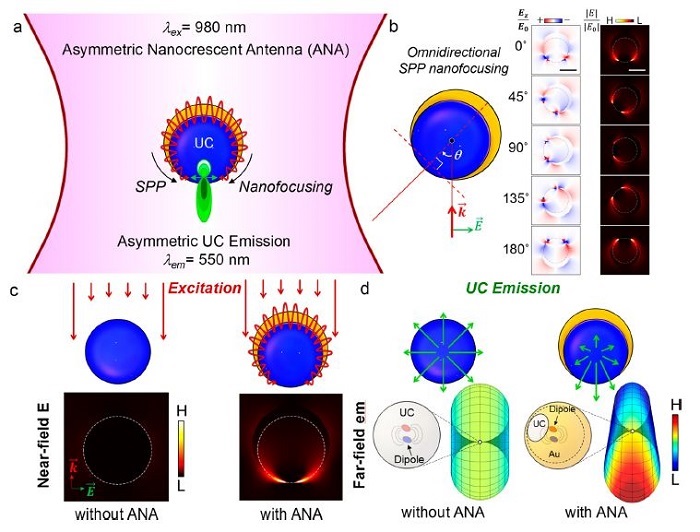2017.12.02
Professor Min-Gon Kim of the Department of Chemistry at the Gwangju Institute of Science and Technology have developed a crescent-shaped nano-antenna structure that can greatly improve the luminous efficiency of upconverting nanoparticles.
Up-converting nanoparticles are nanoparticles that absorb near-infrared light and emit visible light. They are doped with lanthanide ions. By using low-energy near-infrared light as a light source, no background fluorescence is generated, which can greatly reduce background noise.
Up-converting nanoparticles are attracting attention as a substitute for a fluorescent substance such as an organic dye and a quantum dot because of their strong luminescence intensity, excellent light stability, tissue permeability, and biocompatibility.
However, since the energy absorbed by two photons is changed into one large photon, the efficiency of the up-converting nanoparticles is very low. Research has been actively conducted to increase the luminous efficiency, such as controlling the photonic crystal structure or using plasmon (collective movement of free electrons in a metal) nanoparticles, but it has been difficult to spatially control the emission signal.
The team succeeded in developing an asymmetric nanoantenna structure (ANAU) that deposited a few nanometers (nm = one billionth of a meter) of gold on up-converting nanoparticles in a crescent shape. The ANAU was made by dropping up-converting nanoparticles onto a transparent polymer-coated substrate with a layer of gold.
The team confirmed that this nanowire antenna structure can effectively coalesce light and control the efficiency of light emission in certain directions. As a result of the asymmetric emission signal concentrated in the tip of the antenna structure, the research team improved the luminous efficiency of the up-converting nanoparticles by about 16 times.
Professor Min-Gon Kim, "We proposed a new method to improve the luminous efficiency and generate the emission signal controlled in a specific direction by using the geometrically controlled nanoantenna structure. In the future, I expect that this will be applied to various fields, such as bio-imaging and bio-sensing.."
This research was financially supported by grants from the Global Research Lab (GRL) Program funded by the Ministry of Science, ICT and Future Planning, and the Air Force Office of Scientific Research Grants. Their paper "Asymmetric Nanocrescent Antenna on Upconversion Nanocrystal" was published in August 21, 2017, in Nano Letters.













